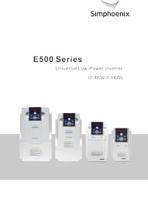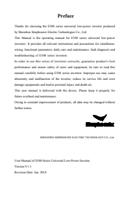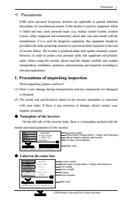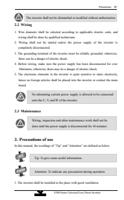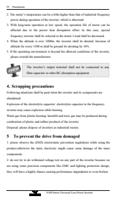Page 88 of 112

SIMPHOENIX Self-Defined Communication Protocol 79
1.2 Bus Structure and Protocol Specification
1.2.1 Bus Structure
1. Physical layer
Standard RS485 bus.
2. Transmission mode
Asynchronous serial and half-duplex transmission mode. Either main machine or
slave machine can send data at the same time, while the other one can receive
data only. The data will be sent frame by frame in message format in the process
of serial asynchronous communication.
3. Topology mode
Single main station system is compatible with 32 stations at most with one
station for main machine and the other 31 stations for slave machine. The setting
range of slave address is 0-30, while 31(1FH) is the broadcast communication
address. The slave address must be unique in the network. In fact, point-to-point
mode is identified as special applications case of topology mode with “One main
machine and multiple slave machines”, namely the condition of existing only
one slave machine.
1.2.2 Protocol Specification
E500 series is applicable to MODBUS (please refer to Appendix II for details)
and SIMPHOENIX custom communication protocol, which is to be described as
follows: SIMPHOENIX custom communication protocol is a serial master-slave
communication protocol, only one device (main machine) in the network can set
up protocol (named as query/command), while the other devices (slave machine)
can provide data to response query/command of main machine or operate the
corresponding actions in line with query/command of main machine. Here, main
machine refers to personal computer (PC), industrial personal computer (IPC) or
programmable logic controller (PLC), etc., while slave machine refers to the
inverter. Main machine can separately access some slave machine and send
broadcast message to all slave machine. As for query/command for separate
E500 Series Universal Low-Power Inverter

